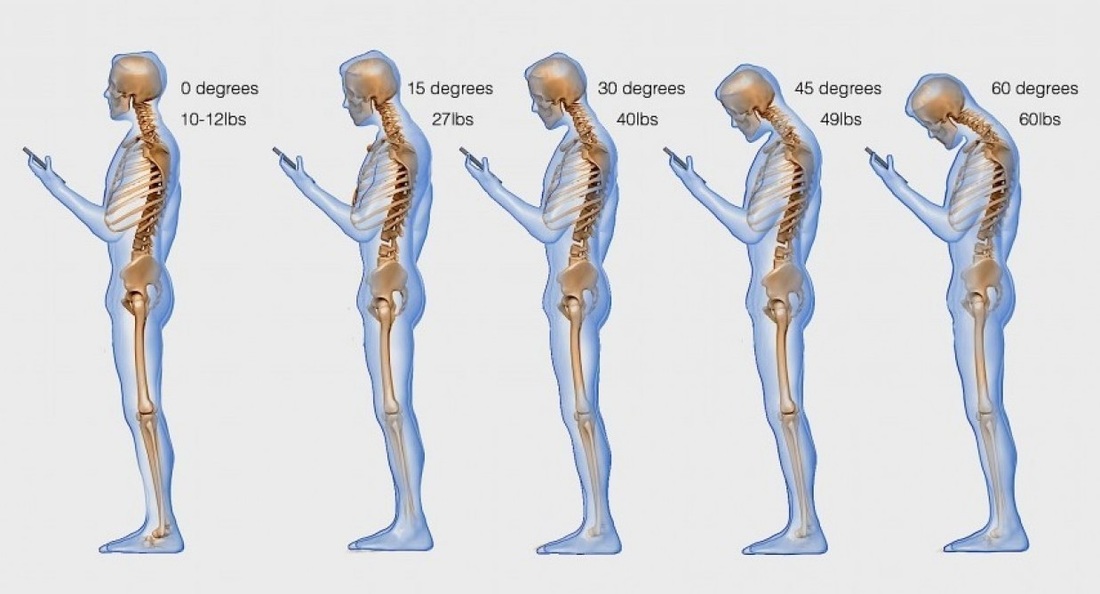| Can you guess how much time the average American spends looking down at his or her phone? According to the analytics firm Flurry, it’s 3 hours per day! This is not great news for our spines. Recently, Dr. Kenneth Hansraj published a study in the National Library of Medicine recognizing this downward facing posture (which he refers to as “text neck”) as a serious problem affecting our population today. (1) Looking at our phones (or tablets, computers, etc.) for so long throughout the day can cause premature degeneration or “wear-and-tear” on the joints in our cervical spine. |
At a 15-degree angle, it’s 27 pounds
At a 30-degree angle, it’s 40 pounds
At a 45-degree angle, it’s 49 pounds
At a 60-degree angle, it’s 60 pounds
This could also explain why we’re beginning to see these early signs of spinal degeneration in children as young as 12 years old. Check out my tips below to see how you can help prevent extra wear-and-tear in your spine when looking at your mobile devices:
1. Hold your phone up - When you’re sitting or standing, start to become aware of your posture. If you hold your phone out in front of you rather than downward (as if you were taking a selfie), you can minimize the amount of pressure on your spine. (Or, if you're really ambitious, you can check out this interesting device from the start-up Neckset, Ltd.)
2. Stretch your chest and neck - Chest openers and neck stretches are great exercises to reverse some of the stress that’s caused in our body from looking downward all day. Here are two of my favorite stretches to do during the day:
Don’t have a chiropractor yet? Give us a call at 203-355-2830 or request an appointment online to set up a spinal check-up for you or your children today.
Sources:
1. HANSRAJ, KENNETH K. "Assessment of stresses in the cervical spine caused by posture and position of the head." Surgical technology international 25 (2014): 277-279.
2. Srbely J. Spinal manipulative therapy and its role in the prevention, treatment and management of chronic pain. The Journal of the Canadian Chiropractic Association. 2012;56(1):5-7.






 RSS Feed
RSS Feed
